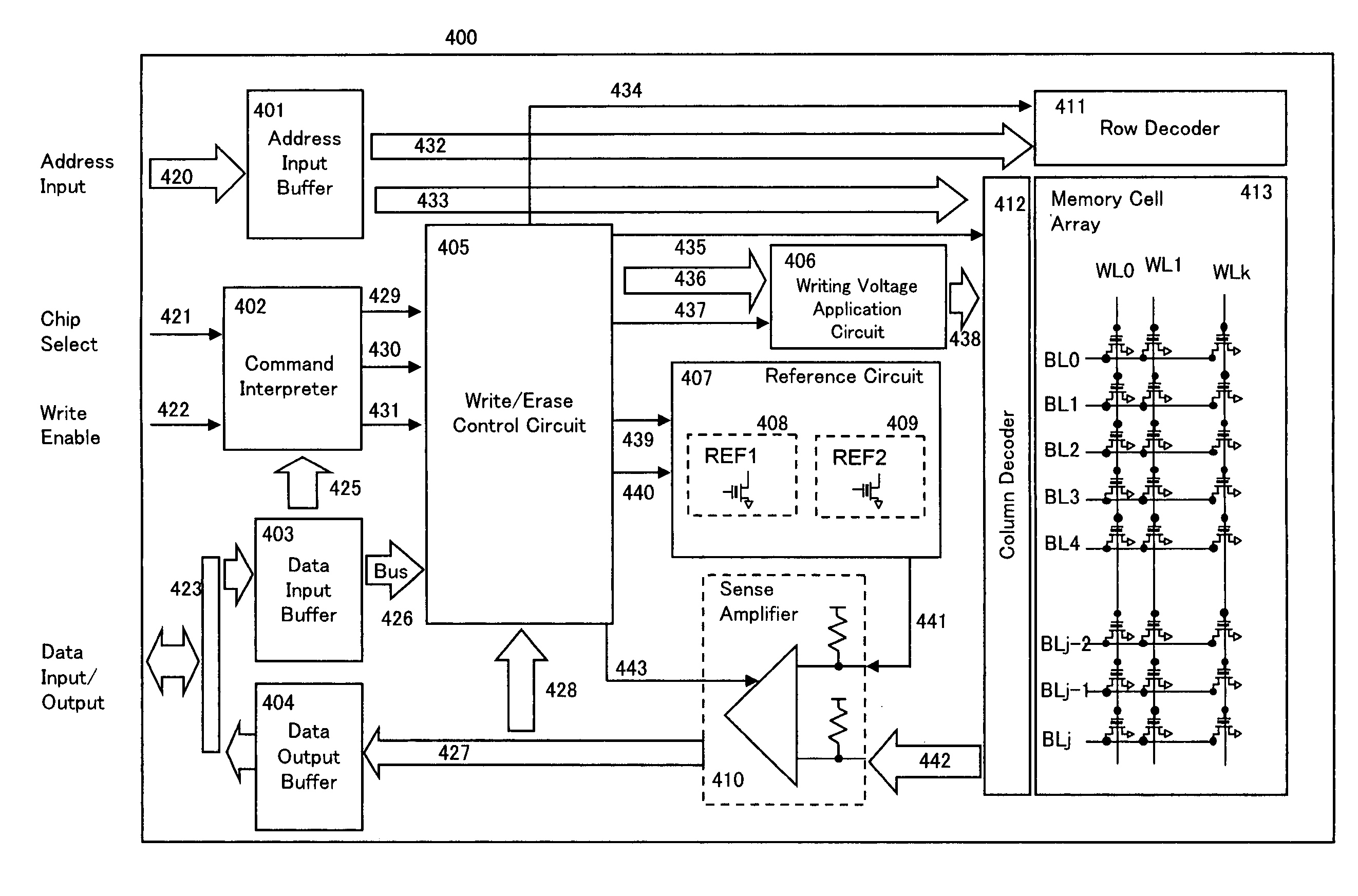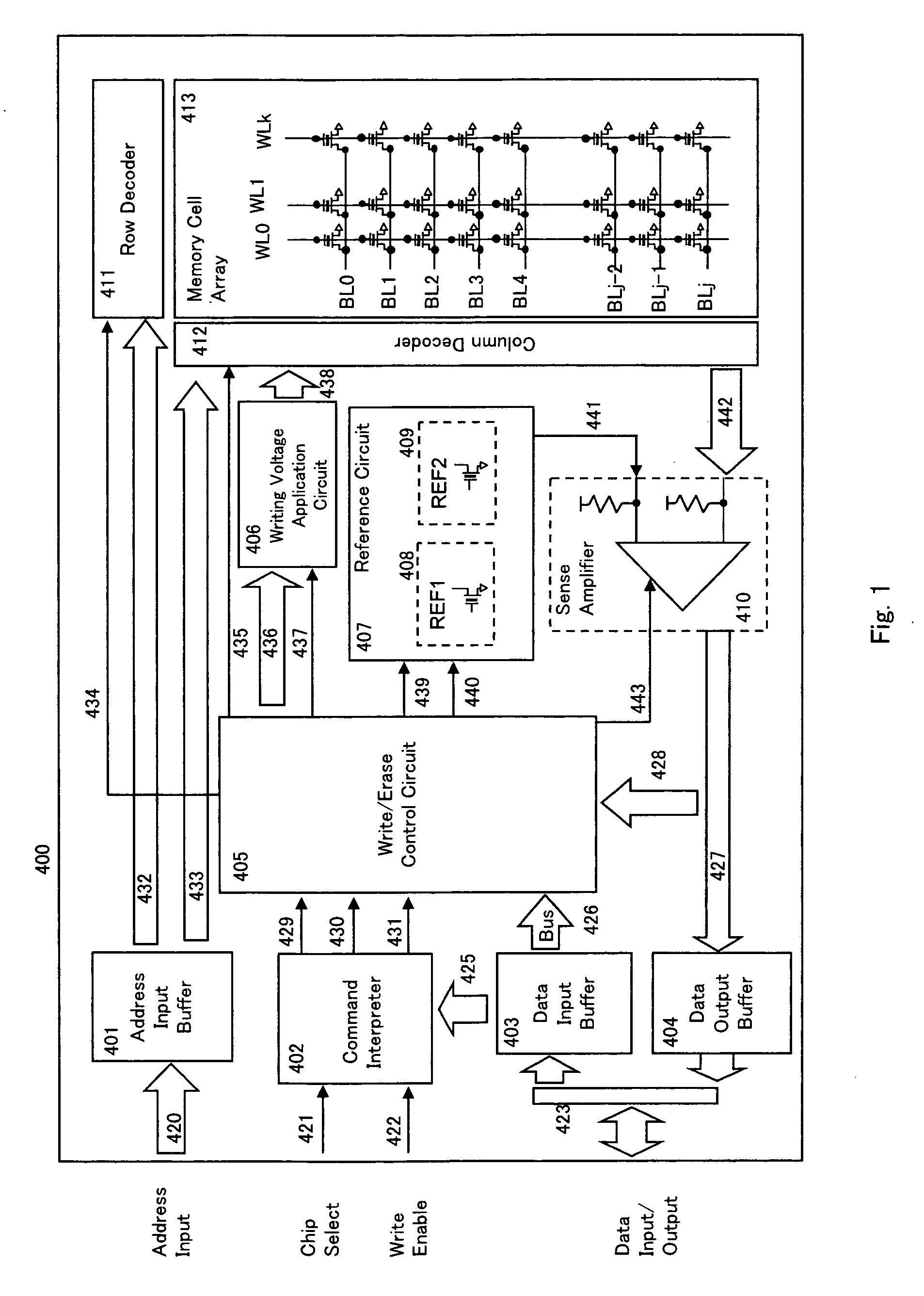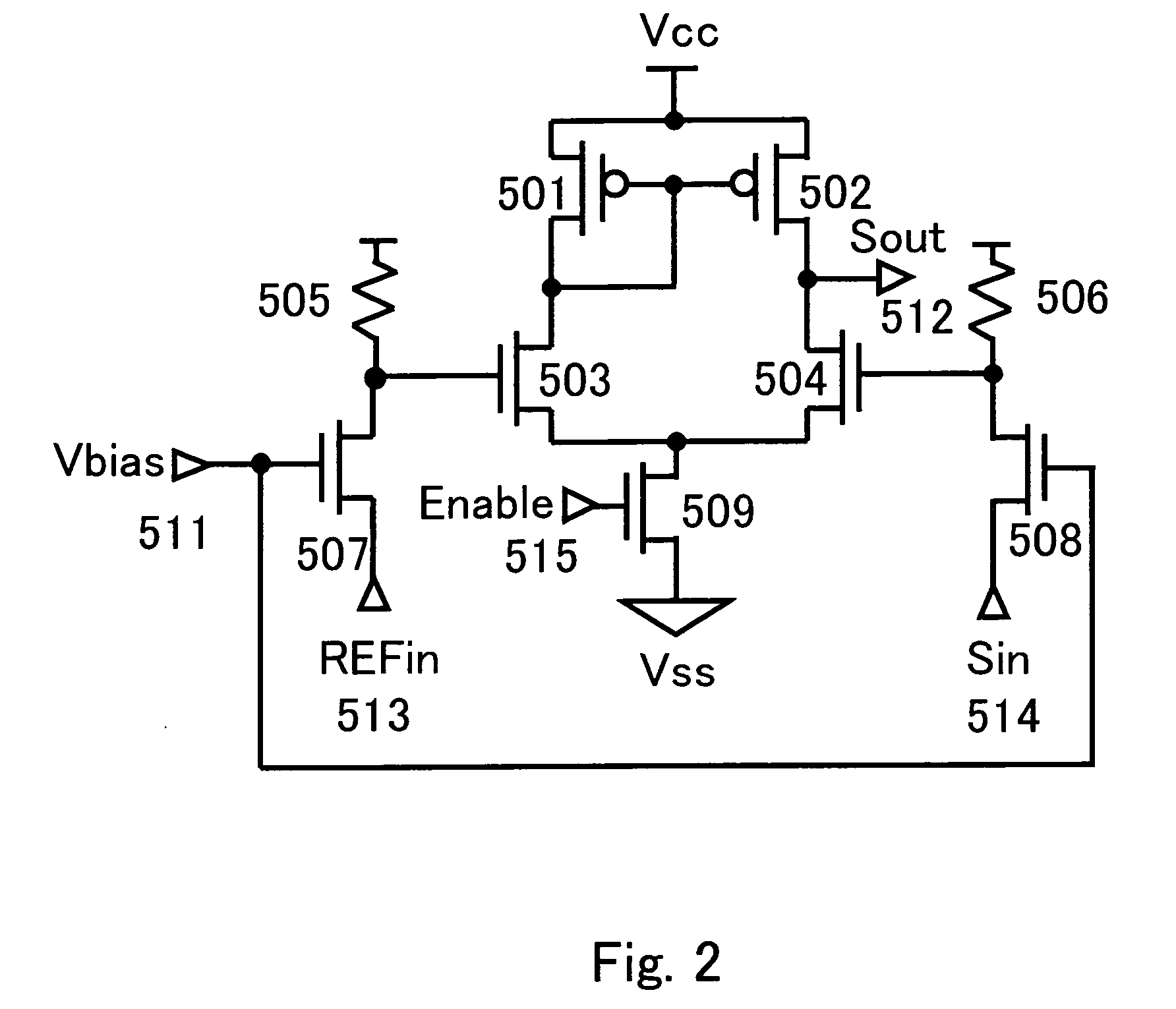Nonvolatile semiconductor memory device and its writing method
a non-volatile semiconductor and memory device technology, applied in static storage, digital storage, instruments, etc., can solve the problems of gradual deviation of threshold voltage once written and set, and worsening of read-out margins, so as to prevent the distribution of threshold voltage
- Summary
- Abstract
- Description
- Claims
- Application Information
AI Technical Summary
Benefits of technology
Problems solved by technology
Method used
Image
Examples
Embodiment Construction
[0047] In the following, we describe embodiments of a nonvolatile semiconductor memory device according to the present invention and a method of writing thereto (hereinafter abbreviated as “a device of the present invention” and “a method of the present invention”, as appropriate), based on the drawings.
[0048]FIG. 1 is a circuit block diagram of one embodiment of a device of this invention 400. In this embodiment, it comprises memory cell arrays consisting of memory cells comprising nonvolatile transistors capable of electrically writing, erasing and reading out information arranged in a matrix in a row direction and in a column direction. As nonvolatile transistors comprising the memory cells, a floating gate type MOS transistor that has a floating gate, and is configured to perform writing by injecting channel hot electrons and erasing by using Fowler-Nordheim current (FN current) is used. In the memory cell array 413, bit lines BL0 to BLj and word lines WL0 to WLk are arranged, ...
PUM
 Login to View More
Login to View More Abstract
Description
Claims
Application Information
 Login to View More
Login to View More - R&D
- Intellectual Property
- Life Sciences
- Materials
- Tech Scout
- Unparalleled Data Quality
- Higher Quality Content
- 60% Fewer Hallucinations
Browse by: Latest US Patents, China's latest patents, Technical Efficacy Thesaurus, Application Domain, Technology Topic, Popular Technical Reports.
© 2025 PatSnap. All rights reserved.Legal|Privacy policy|Modern Slavery Act Transparency Statement|Sitemap|About US| Contact US: help@patsnap.com



